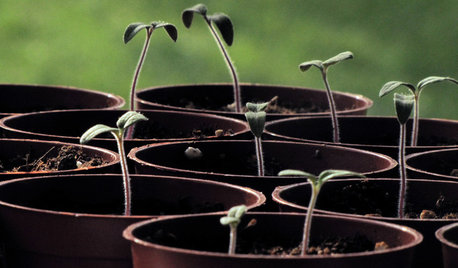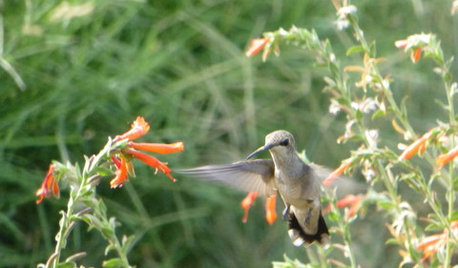Highest temp frost can occur?
treenutt
10 years ago
Related Stories

GARDENING GUIDESGot Frost-Damaged Plants? How It Happens, and When and How to Prune
Crispy brown leaves are a sure sign that Jack Frost has been to your neighborhood
Full Story
LIFEHow Your Landscaping Can Keep Burglars Away
Prevent home break-ins with strategic landscaping and good practices instead of menacing — and maybe less effective — measures
Full Story
WINDOW TREATMENTS7 Window Treatments That Can Lower Your Energy Bills
Beautify your windows, keep your home cool and reduce energy use all at once with the right covering
Full Story
GREAT HOME PROJECTSSay Goodbye to the Shower Curtain With a Glass Tub Enclosure
A glass screen or door can make a bathroom look modern and airy, and can be easy to clean if you don’t have hard water
Full Story
EDIBLE GARDENSPlanting Time: Get Your Garden Started With Seeds
You can get an early gardening fix — and save money too — by starting seedlings in the warm indoors
Full Story
GARDENING GUIDESSweet Serendipity: Opening to Happy Garden Discoveries
Unplanned nature scenes can be unbelievably beautiful; you just need to know how to look
Full Story
CONCRETEWhy Concrete Wants to Crack
We look at the reasons concrete has a tendency to crack — and what you can do to help control it
Full Story
GREEN BUILDINGInsulation Basics: Heat, R-Value and the Building Envelope
Learn how heat moves through a home and the materials that can stop it, to make sure your insulation is as effective as you think
Full Story
SHOWERSNo Need to Compromise on Style With a Shower-Tub Combo
A combination shower and bathtub can be a chic and practical option if you don’t have room for separate ones
Full Story
REMODELING GUIDESWhat to Know About Engineered Wood Floors
Engineered wood flooring offers classic looks and durability. It can work with a range of subfloors, including concrete
Full StoryMore Discussions








j0nd03
arktrees
Related Professionals
El Sobrante Landscape Contractors · Holtsville Landscape Contractors · Siloam Springs Landscape Contractors · Welby Landscape Contractors · West Haverstraw Landscape Contractors · Fairfax Siding & Exteriors · Milford Siding & Exteriors · South Plainfield Siding & Exteriors · Waterville Siding & Exteriors · Yorkville Siding & Exteriors · Brookfield Siding & Exteriors · Lowell Siding & Exteriors · Lake Morton-Berrydale Decks, Patios & Outdoor Enclosures · Prescott Decks, Patios & Outdoor Enclosures · Wilmington Decks, Patios & Outdoor Enclosuresbengz6westmd
j0nd03
treenuttOriginal Author
j0nd03
arktrees
cearbhaill (zone 6b Eastern Kentucky)
rusty_blackhaw
treenuttOriginal Author
tsugajunkie z5 SE WI ♱
j0nd03
joeinmo 6b-7a